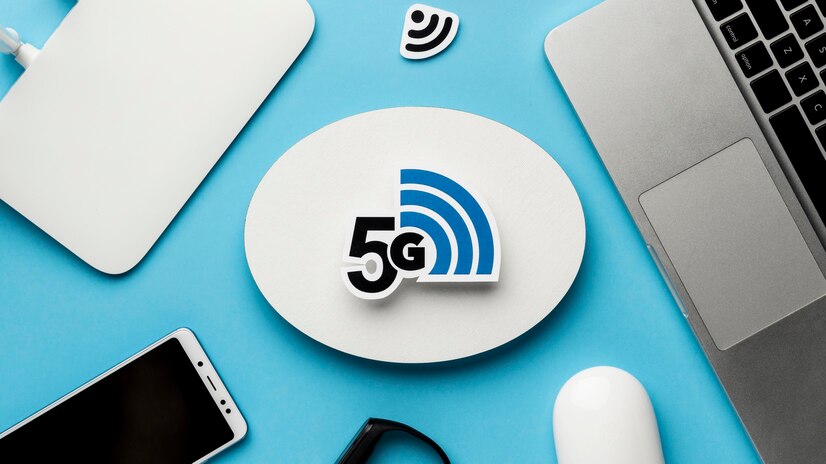To use the internet without a sim card and wifi, you can utilize features like mobile hotspot, USB tethering, or connect to a public or shared internet connection. These methods allow you to access the internet through your phone’s cellular data.
In today’s digital age, staying connected is essential, but not always possible. Whether you’re traveling or in an area with limited connectivity, accessing the internet without a sim card and wifi can be crucial. Fortunately, there are alternative methods to stay connected.
By utilizing your phone’s features or seeking out public internet spots, you can ensure you have access to essential online services and information. Understanding these options can help you navigate through periods of limited connectivity without being completely cut off from the internet.

Unconventional Internet Access Methods
Explanation Of Alternatives To Sim And Wifi
In today’s connected world, access to the internet has become almost essential for many aspects of work and daily life. However, traditional methods such as SIM cards and WiFi may not always be available or may come with limitations. In these cases, it’s helpful to explore unconventional methods to access the internet without relying on SIM cards or WiFi connections.
Legal Considerations And Safety Precautions
When utilizing unconventional internet access methods, it’s crucial to be aware of the legal and safety considerations. Some methods may involve legal restrictions or potential security risks, making it essential to exercise caution and adhere to regulations. By understanding these considerations, individuals can protect themselves while accessing the internet through alternative means.
Utilizing Internet-over-satellite Services
When it comes to accessing the internet without a SIM card or Wi-Fi, satellite internet is a game-changer. Utilizing satellite communication allows users to connect to the worldwide web from virtually anywhere, making it an invaluable resource for those in remote locations or areas with limited connectivity.
Overview Of Satellite Communication
Satellite communication involves the use of communication satellites to provide internet access to users. These satellites are stationed in geostationary orbit, enabling them to relay signals between a ground station and the user’s satellite dish.
Steps To Access Satellite Internet
Accessing satellite internet involves a few straightforward steps:
- Acquire a satellite dish and modem: Obtain the necessary equipment from a reputable satellite internet service provider.
- Install and align the satellite dish: Properly install and align the satellite dish to ensure optimal signal reception.
- Activate the service: Follow the provider’s instructions to activate the satellite internet service and configure the modem.
- Connect and surf: Once the setup is complete, connect your devices to the satellite internet and begin exploring the web.
With these steps, users can easily access the internet through satellite communication, overcoming the limitations of traditional SIM card and Wi-Fi-based connectivity.
In addition to providing connectivity in remote areas, satellite internet offers high-speed and reliable internet access, making it a versatile option for individuals and businesses alike.
Tethering Internet From Other Devices
Tethering internet from other devices allows you to access the internet without a SIM card or WiFi. It enables you to utilize the data connection from a smartphone or another internet-enabled device to get online with your device. This can be particularly useful when you’re in a location without access to a traditional WiFi network or when you need a backup internet connection.
How To Tether Without Sim Or Wifi
Tethering without a SIM card or WiFi can be achieved by leveraging the connectivity features of your device and other internet-enabled devices. This method allows you to tap into existing data connections to get online, providing flexibility and convenience.
Types Of Connections: Bluetooth, Usb
When it comes to tethering internet without a SIM card or WiFi, you have a few options for establishing a connection:
- Bluetooth: A Bluetooth connection can be used to tether internet from one device to another. It allows for wireless data sharing and can be a convenient way to access the internet without traditional WiFi.
- USB: Tethering via USB involves connecting your device to another device, such as a smartphone or laptop, using a USB cable. This method can provide a stable and reliable internet connection without the need for a SIM card or WiFi.
Alternative Networks And Public Access
When it comes to accessing the internet without a SIM card or traditional Wi-Fi, exploring alternative networks and public access points becomes essential. Understanding the various methods and technologies available can provide valuable opportunities for individuals and businesses to stay connected. Municipal Wi-Fi services and WiMAX technology are two prominent options for users seeking non-traditional internet access.
Municipal Wi-fi Services
Municipal Wi-Fi services refer to wireless networks deployed in public areas by local governments or private entities. These networks aim to provide cost-effective internet access to residents and visitors within the municipality. The availability of municipal Wi-Fi networks can vary from city to city, but they commonly cover public spaces such as parks, libraries, and government buildings. By connecting to these networks, users can access the internet without a SIM card or traditional home Wi-Fi.
Wimax Technology
WiMAX technology, standing for Worldwide Interoperability for Microwave Access, is a wireless communication standard that offers high-speed internet access over a wide area. Unlike traditional Wi-Fi, WiMAX networks can provide internet connectivity to devices over longer distances, making them suitable for serving rural or underserved areas. By utilizing WiMAX technology, individuals and businesses can access the internet without relying on SIM cards or traditional Wi-Fi setups, opening up new possibilities for connectivity.
Data Sharing Via Peer-to-peer Apps
When it comes to accessing the internet without a SIM card and Wi-Fi, data sharing via peer-to-peer apps offers a viable solution. Peer-to-peer (P2P) technology allows devices to connect directly to each other without the need for a centralized server. This enables users to share data and access the internet through direct connections, making it a practical option for individuals looking to stay connected in various scenarios.
Using Mesh Network Applications
Mesh network applications utilize a decentralized approach to create a network where each device cooperates in the distribution of data. This means that even without a SIM card or traditional Wi-Fi access, users can connect to nearby devices that are part of the mesh network and access the internet. By leveraging self-configuring and self-healing networks, these apps enable seamless connectivity, making them valuable tools for staying online in a variety of situations.
Offline Data Sharing Technologies
Various offline data sharing technologies, such as Bluetooth, Near Field Communication (NFC), and infrared, can facilitate connectivity between devices without the need for a SIM card or Wi-Fi. These technologies allow for the transfer of data, files, and information directly between compatible devices, providing a means to access and share content in the absence of traditional internet connectivity. Furthermore, these offline data sharing options can be particularly useful in situations where network access is limited or unavailable.

How To Use Internet Through Ethernet
In a world where internet connectivity is crucial, finding alternative methods of accessing the internet without a SIM card or Wi-Fi is essential. One reliable and often overlooked option is through Ethernet connections. This method enables users to connect to the internet using a wired connection, providing a stable and secure means of accessing online content. Below, we’ll explore the process of setting up a wired connection and identify sources of Ethernet access without the need for SIM cards or Wi-Fi.
Setting Up A Wired Connection
Setting up a wired connection through Ethernet involves a few simple steps. To begin, ensure that your device has an Ethernet port, which allows for a physical connection to the internet. Then, obtain an Ethernet cable of sufficient length to connect your device to the Ethernet port provided by your source of internet access. Connect one end of the Ethernet cable to your device’s port and the other to the available Ethernet port. Once connected, your device should recognize the wired connection and automatically establish internet connectivity.
Sources Of Ethernet Access Without Sim/wifi
When seeking sources of Ethernet access without relying on SIM cards or Wi-Fi, consider public locations such as libraries, internet cafes, and co-working spaces. These venues often provide Ethernet connections for patrons looking to access the internet without traditional wireless methods. Additionally, certain accommodations, such as hotels and business centers, may offer Ethernet access as an alternative to SIM card or Wi-Fi connections. These sources can serve as valuable options for individuals seeking reliable internet access through Ethernet.
Frequently Asked Questions On How To Use Internet Without Sim Card And Wifi
Can I Access The Internet Without A Sim Card?
Yes, you can access the internet without a SIM card by connecting to available Wi-Fi networks. Many smartphones and tablets have the capability to connect to Wi-Fi networks, allowing you to browse the web and use online services.
How Can I Use The Internet Without Wi-fi Or A Sim Card?
You can use the internet without Wi-Fi or a SIM card by utilizing options like portable Wi-Fi hotspots, satellite internet, or using other devices with active internet connections, such as tethering from another phone or using an Ethernet connection through an adapter.
Are There Any Alternatives To Using A Sim Card For Internet Access?
Yes, alternatives to using a SIM card for internet access include eSIM technology, which allows you to connect to cellular networks without a physical SIM card, or using devices with built-in cellular connections that are not reliant on traditional SIM cards for internet access.
Conclusion
Utilizing the internet without a SIM card and Wi-Fi connectivity is a feasible option for various situations. By implementing alternative methods such as tethering, utilizing mobile hotspot devices, or accessing public Wi-Fi networks, individuals can stay connected online even without a SIM card or traditional Wi-Fi access.
These alternatives offer flexibility and convenience in different scenarios, providing users with the ability to access the internet on the go.

